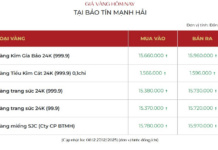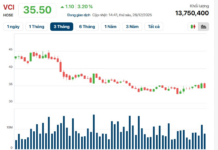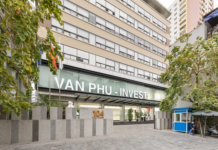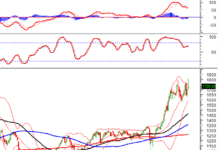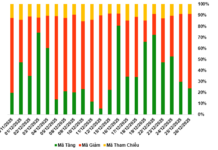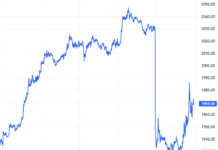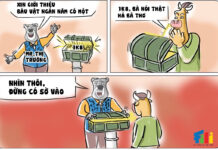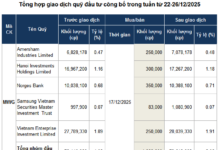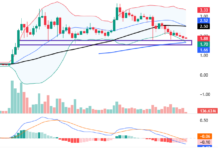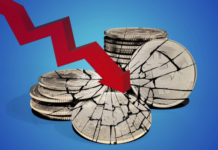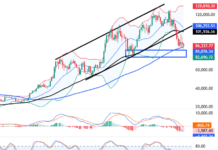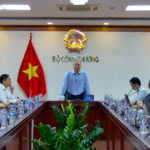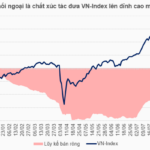Addressing the audience at the ceremony commemorating the 30th anniversary of the Vietnam Textile and Apparel Group (Vinatex) on August 1, 2025, Mr. Le Tien Truong, Chairman of Vinatex’s Board of Directors, shared that the past 30 years have been a journey of unwavering dedication, innovation, and resilience for the collective. Vinatex takes pride in being the backbone of Vietnam’s textile and apparel industry and a pivotal link in the global textile supply chain.
INNOVATION AND CREATIVITY IN EVERY JOURNEY
Each phase of this journey is marked by the innovative and collaborative spirit of the Vinatex family. From 1995 to 2005, Vinatex was in its formative years, laying the foundation for future growth. The Vietnam National Textile and Garment Corporation was established during a fragmented era for the industry, with export turnover reaching only about $850 million. Many member units faced potential bankruptcy following the collapse of the old socialist market. Since its inception, Vinatex has shouldered the responsibility of restructuring and reviving key enterprises such as Nam Dinh Textile, March 8 Textile, and Hoa Tho, setting the initial groundwork for the industry’s advancement while embracing integration as Vietnam normalized trade relations with the US, became a full member of ASEAN, and joined ASEM.
The period from 2005 to 2015 witnessed the extensive corporatization of member units, while the parent company retained its role as a leading state-owned enterprise, steering strategic coordination and investing in vital areas. Vinatex expanded its investments in integrated supply chains, encompassing yarn, fabric, dyeing, and garment production. They also built strong brands and promoted trade in major markets, propelling the industry’s export turnover beyond $26 billion by 2015. This remarkable achievement cemented Vietnam’s position among the top 5 textile and apparel exporters globally.
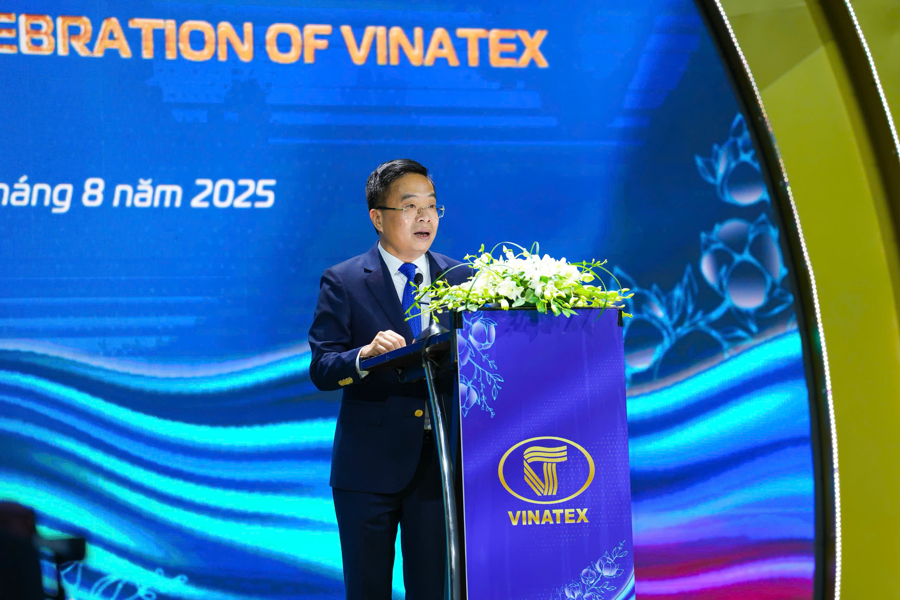
In 2015, the Parent Company transformed into a joint-stock company, officially adopting modern governance practices. Vinatex has consistently invested in technology, talent development, and enhancing productivity and product quality. Today, several member units are capable of operating under FOB, ODM, and OBM models, catering to large orders and meeting the stringent requirements of primary markets such as the US, EU, and Japan.
Notably, during the challenging period from 2020 to 2025, marked by the COVID-19 pandemic, geopolitical conflicts, global economic crises, and trade tensions, Vinatex demonstrated resilience by maintaining its workforce, sustaining production, and achieving stable growth: an average annual revenue increase of 6%, a 31% surge in pre-tax profits, a 25% share of green products in total output, and over a 6% yearly rise in employees’ income.
“These outcomes showcase our tenacity, adaptability, and unwavering commitment to sustainable development,” emphasized Mr. Truong.
SOLID FOOTING IN THE SUPPLY CHAIN
As Vinatex embarks on its next chapter, facing rapid technological advancements, geopolitical shifts, and evolving consumer trends, the group’s leader reaffirms the strategy of being “A One-Stop Destination for Comprehensive Solutions in Green Textile and Fashion.” With a vision to become one of the world’s leading textile and apparel groups by 2045, Vinatex aims to offer high value-added products, excel in competitiveness, and be a trusted partner in the global textile supply chain, as well as an attractive investment prospect.
“We are dedicated to sustainable development, aiming to double our consolidated profits and triple our individual profits by 2030. We are committed to ensuring that our employees’ annual income surpasses the actual CPI by 2-3%, achieving 100% environmental standards, and reducing greenhouse gas emissions,” asserted Mr. Truong.
In tandem, Vinatex is cultivating a modern, safe, and equitable work environment, where employees are valued and empowered. As a group that owns a complete textile supply chain, Vinatex fosters transparent, efficient, and responsible governance, steadily establishing itself as a sustainable and trendsetting national enterprise.
Congratulating Vinatex on its impressive accomplishments over the past 30 years, Mr. Lai Xuan Lam, Deputy Secretary of the Government Party Committee, acknowledged the group’s exceptional fulfillment of the tasks assigned by the Party and the State, effectively combining profitable operations with its role as the industry leader.
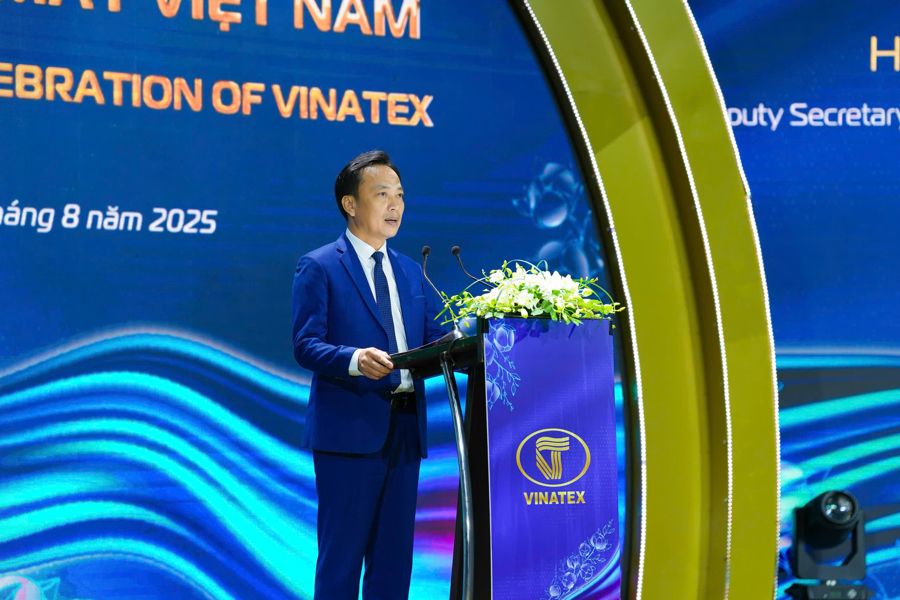
Given the complex international context, Mr. Lam advised Vinatex to build on its 30-year legacy of innovation, leveraging science, technology, and creativity as the primary drivers to enhance productivity, quality, and competitiveness. He emphasized the importance of digital transformation, green transition, energy transformation, and circular economy, along with fulfilling environmental, social, and corporate governance commitments and initiatives.
Additionally, Vinatex should excel in political and business tasks, solidifying its position as a trusted partner in the supply chain for prominent global manufacturers and distributors. Building customer confidence based on the company’s strengths and optimizing efficiency across the chain are also crucial.
Mr. Lam further advised Vinatex to focus on technological breakthroughs and high-value-added products as pivotal factors in creating a differentiated and competitive edge. He also emphasized the importance of training a high-quality workforce and leadership capable of steering the enterprise through the uncertainties of the global economy. Propagating the Vinatex culture of “Unity, Self-reliance, Innovation, Creativity, and Breakthrough,” cultivated over three decades of development, is essential to solidifying Vinatex’s position as the vanguard of Vietnam’s textile and apparel industry.
“These orientations are the tasks and expectations set by the Party, State, and people for Vinatex in the upcoming development journey, particularly during the 2025-2030 period, as the country strides into a new era,” concluded the Deputy Secretary of the Government Party Committee.
“Regulator and Large Financial Institutions’ Involvement Makes the Digital Asset Market More Efficient, Says SSI’s Director.”
“The crypto market in Vietnam is currently dominated by individual investors, with almost 100% of transactions originating from this demographic. Major institutions like Dragon Capital, VinaCapital, and SSI have yet to fully engage in asset management roles within this space. ‘When this changes, the market will mature and become more regulated,’ says Thomas Nguyen, SSI Securities’ Overseas Markets Director.”
Unveiling Untapped Export Markets for Innovative Products
The consumption of Vietnamese sci-tech products in foreign markets remains limited. This poses a challenge for coordination between ministries, industries, businesses, and the Vietnamese trade offices abroad in bringing innovative Vietnamese products to the global market.
“Front-Running the Upgrade ‘Wave’: Foreign Investors Buy Over 8 Trillion VND in July”
The VN-Index witnessed a remarkable journey in July, reaching an unprecedented closing high of 1,557.42 points. This achievement can be largely attributed to the significant net foreign buying of over VND 8.1 trillion, with 14 net buying sessions during the month. As a result, the net selling scale from the beginning of the year was narrowed to nearly VND 29.4 trillion.










